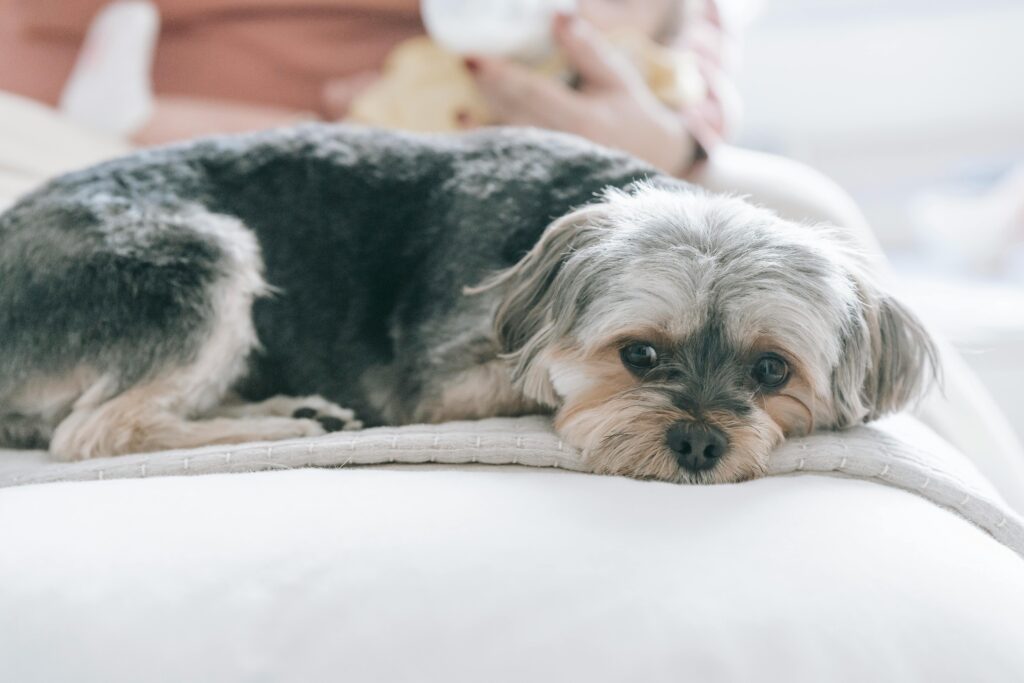
Bringing a new puppy into your home is full of excitement, cuddles, and cuteness overload. But if your puppy keeps peeing inside the house, it can quickly turn into a frustrating challenge for pet parents. While occasional accidents are normal, frequent indoor peeing might signal a deeper issue that needs your attention.
Let’s dive into the common reasons your puppy might still be having accidents indoors and how you can correct the behavior safely and effectively. 🧼🐾
- Your Puppy Is Too Young to Hold It In
If your puppy is under 12 weeks old, they may simply not have the bladder control needed yet. Young puppies need to go potty very frequently—sometimes every 30 to 60 minutes when they’re awake. It’s not their fault—they just physically can’t hold it.
What to do: Take your puppy out every hour during the day, especially after eating, playing, or waking up from a nap. Consistency and patience are key during this early stage. Praise and reward them immediately after they go potty outside. 🎉
- Inconsistent Potty Training Routine
One of the biggest reasons a puppy keeps peeing inside is an inconsistent potty training schedule. If your pup isn’t being taken out at the same times each day or doesn’t understand where they should go, confusion sets in.
What to do: Stick to a strict routine. Feed your puppy at the same times each day and take them out right after. Puppies thrive on structure. Use a cue word like “go potty” and always praise them when they go in the right spot. 📅🦴
- Lack of Supervision Indoors
Letting your puppy freely roam around the house too soon can lead to more accidents. They may sneak off to another room to pee without you noticing.
What to do: Use a crate or a playpen when you can’t keep a close eye on them. You can also use baby gates to block off rooms. Keep them in your line of sight so you can learn their pre-potty signs like sniffing, circling, or whining. 🐶👀
- Anxiety or Fear
Just like humans, puppies can get anxious in new environments or when left alone. If your puppy keeps peeing inside, it could be due to separation anxiety, fear of loud noises, or unfamiliar surroundings.
What to do: Create a calm and safe space for your puppy. Use comforting toys, calming music, and avoid scolding them harshly. If the anxiety seems severe, talk to your vet or a dog behaviorist. ❤️🏡
- Medical Issues
Sometimes, frequent accidents can be caused by medical problems such as urinary tract infections (UTIs), bladder stones, or diabetes. If your puppy was previously doing well with potty training but suddenly starts having accidents again, it could be a health issue.
What to do: Visit your veterinarian to rule out any medical concerns. A quick urine test can often reveal if there’s an underlying issue. 🏥🩺
- Previous Indoor Peeing Smells
Dogs tend to return to the same spot to pee if it still smells like a bathroom to them—even if it seems clean to us.
What to do: Use an enzyme-based cleaner specifically designed for pet messes. These break down the urine at the molecular level and remove the scent completely. Avoid ammonia-based cleaners, which can mimic the smell of urine. 🧽🚿
- Scent Marking
Some puppies may start marking territory, especially if you have other pets. This isn’t the same as regular peeing—it’s more about establishing dominance or responding to hormonal changes.
What to do: Spaying or neutering can reduce marking behavior. Also, supervise your puppy more closely, and interrupt the behavior with a firm “No” followed by redirection to a toy or different activity. 🐕🚫
- Not Enough Positive Reinforcement
If you’re not rewarding your puppy immediately after they pee outside, they might not understand that going outside is the goal. Timing is everything.
What to do: Always carry treats with you when taking your puppy out. Reward them the moment they finish peeing. Make it a big, exciting moment so they remember that peeing outside = good things! 🎊🍖
Final Tips for Success 🌟
Take your puppy out after every meal, nap, and play session. Use the same potty spot outside to help them build a routine. Keep a potty training journal to track progress and patterns. Be patient—accidents are part of the process!
When a puppy keeps peeing inside, it’s easy to feel overwhelmed. But with consistent training, lots of love, and some troubleshooting, your pup will be well on their way to becoming fully house-trained. Don’t worry—you’ve got this, and so does your furry friend! 🐾💛Petsdogpuppy
